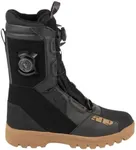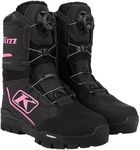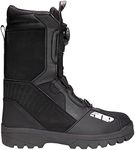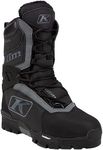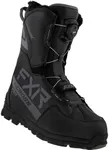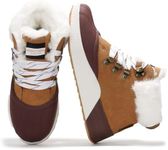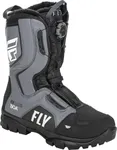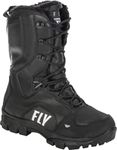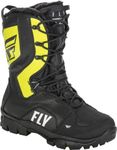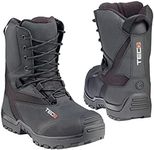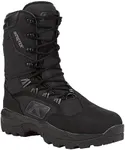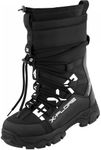Buying Guide for the Best Snowmobile Boots
Choosing the right snowmobile boots is crucial for ensuring comfort, warmth, and safety while riding in cold and snowy conditions. The right pair of boots will keep your feet dry, warm, and protected, allowing you to enjoy your snowmobiling experience to the fullest. When selecting snowmobile boots, consider the following key specifications to find the best fit for your needs.InsulationInsulation is the material inside the boots that keeps your feet warm by trapping heat. This is important because snowmobiling often involves exposure to very cold temperatures. Insulation is usually measured in grams, with higher numbers indicating more warmth. For mild conditions, 200-400 grams of insulation may be sufficient. For colder conditions, 600-800 grams is recommended, and for extremely cold environments, 1000 grams or more may be necessary. Choose the level of insulation based on the typical temperatures you will be riding in.
WaterproofingWaterproofing ensures that your feet stay dry by preventing water and snow from entering the boots. This is crucial for maintaining warmth and comfort, as wet feet can quickly become cold and lead to discomfort or even frostbite. Look for boots with waterproof membranes or treatments, such as Gore-Tex or similar technologies. If you frequently ride in wet or slushy conditions, prioritize boots with high-quality waterproofing.
Fit and ComfortFit and comfort are essential for long hours of snowmobiling. Boots that are too tight can restrict blood flow and cause cold feet, while boots that are too loose can lead to blisters and reduced control. When trying on boots, wear the same type of socks you plan to use while riding. Ensure there is enough room to wiggle your toes, but not so much that your foot slides around. Consider boots with adjustable features, such as laces, straps, or buckles, to achieve a secure and comfortable fit.
TractionTraction refers to the grip of the boot's sole on various surfaces, which is important for stability and safety when walking on snow and ice. Boots with good traction help prevent slips and falls, especially when getting on and off the snowmobile or walking in icy conditions. Look for boots with deep, aggressive treads made from durable rubber. If you often encounter icy terrain, consider boots with additional features like ice grips or spikes.
DurabilityDurability is the ability of the boots to withstand the harsh conditions of snowmobiling, including cold temperatures, moisture, and rough terrain. Durable boots will last longer and provide better protection. Look for boots made from high-quality materials, such as leather or synthetic fabrics, with reinforced areas like the toe and heel. Consider the stitching and construction quality, as well as any additional protective features like rubber toe caps or abrasion-resistant panels.
Ease of UseEase of use refers to how easy it is to put on and take off the boots, as well as how easy they are to adjust. This is important for convenience and efficiency, especially when you need to quickly gear up or take a break. Look for boots with features like quick-lace systems, zippers, or pull-on loops. If you often need to adjust your boots while wearing gloves, consider models with large, easy-to-grip fasteners.
